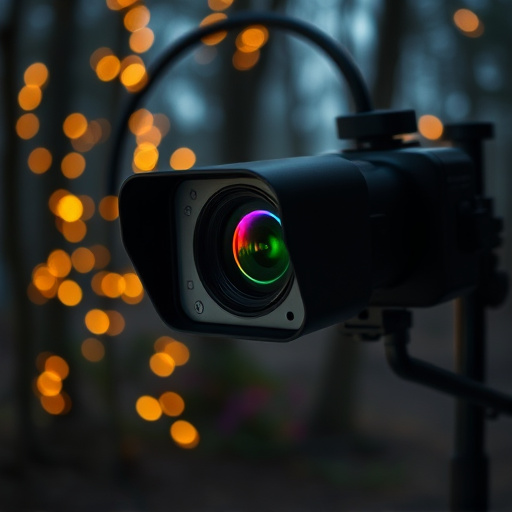Hidden cameras for home monitoring offer a discreet way to enhance security without sacrificing privacy, especially in high-crime areas. Installation requires understanding regional laws and balancing security with ethical considerations. By integrating cameras into everyday objects or furniture, homeowners can maintain normalcy while achieving effective surveillance. Features like motion detection and night vision, along with strategic placement and maintenance, ensure robust protection without detection.
In today’s world, ensuring home security has become a top priority. Hidden cameras offer an effective solution for monitoring your property discreetly, but proper concealment is crucial to maintaining privacy and avoiding legal issues. This guide explores the art of securing hidden cameras at home, addressing key considerations like legal boundaries and best practices for strategic placement. Discover innovative methods to fortify your home’s defenses while preserving peace of mind.
- Understanding the Need for Concealed Security Cameras
- Legal Considerations and Privacy Concerns
- Effective Methods for Securing Hidden Cameras at Home
- Best Practices for Maintaining Discretion and Safety
Understanding the Need for Concealed Security Cameras
In today’s digital era, hidden cameras for home monitoring have become an essential tool for enhancing security and peace of mind. With advanced technology making surveillance systems more accessible and affordable, homeowners are increasingly opting for concealed camera solutions to protect their properties. The need for these discreet devices stems from the desire to maintain a sense of privacy while still benefiting from robust security measures.
Traditional security cameras often serve as a deterrent, alerting potential intruders to the presence of monitoring equipment. In contrast, hidden cameras offer a more subtle approach, allowing homeowners to capture footage without raising unnecessary attention. This is particularly valuable in scenarios where discretion is crucial, such as in high-crime areas or for individuals with specific security concerns. By integrating these concealed devices into everyday objects or furniture, one can achieve effective home monitoring while maintaining an air of normalcy.
Legal Considerations and Privacy Concerns
When installing hidden cameras for home monitoring, it’s crucial to understand the legal landscape surrounding surveillance technology. Different regions have distinct laws and regulations governing the use of security devices, especially concerning privacy rights. Homeowners must ensure their actions comply with local statutes to avoid potential legal repercussions. For instance, some areas require explicit consent from individuals being monitored, while others have restrictions on the placement of cameras.
Privacy is a significant concern in the discussion around hidden cameras. While these devices offer enhanced security, they can also raise ethical red flags. Capturing footage without knowledge or consent can infringe upon personal privacy, leading to trust issues within communities and potentially violating civil liberties. It’s essential to balance the benefits of home monitoring with the need for transparency and respect for individual rights to maintain a harmonious relationship between security measures and privacy expectations.
Effective Methods for Securing Hidden Cameras at Home
When it comes to securing hidden cameras for home monitoring, there are several effective methods to ensure discretion and maximum security. One of the primary strategies is to integrate the cameras seamlessly into everyday household items. For example, mounting cameras within fake rocks or plants can make them nearly invisible while still capturing valuable footage. Alternatively, utilizing power outlets and electrical boxes as camera housings offers a clever solution, blending the technology with common household features.
Additionally, employing wireless and battery-powered cameras reduces the visible cables, making them less detectable. Advanced settings like motion detection and night vision further enhance these hidden cameras’ capabilities, ensuring that they capture only relevant activity while conserving battery life. Regular updates to the camera software can also improve security by patching vulnerabilities, thereby keeping your home monitoring system robust and effective.
Best Practices for Maintaining Discretion and Safety
Maintaining discretion and safety is paramount when installing hidden cameras for home monitoring. It’s crucial to select camera placements that aren’t readily visible, utilizing creative concealment methods like integrating them into everyday objects or mounting them behind mirrors or picture frames. When selecting a location, consider areas with natural cover, such as corners or behind furniture, to reduce the risk of detection.
Remember, while hidden cameras offer enhanced security, they should complement existing safety measures like robust locks, quality alarms, and well-lit exteriors. Regular maintenance and testing are also essential to ensure the system functions properly when needed, allowing you to enjoy peace of mind with the added protection of unseen vigilance.
Hidden cameras have emerged as a powerful tool for home monitoring, offering enhanced security and peace of mind. By understanding the legal framework and implementing effective concealment methods, homeowners can leverage this technology while respecting privacy concerns. Balancing discretion and safety is key, ensuring that these devices serve their purpose without compromising ethical standards. With the right approach, hidden cameras can provide a robust layer of protection for your home and loved ones.
